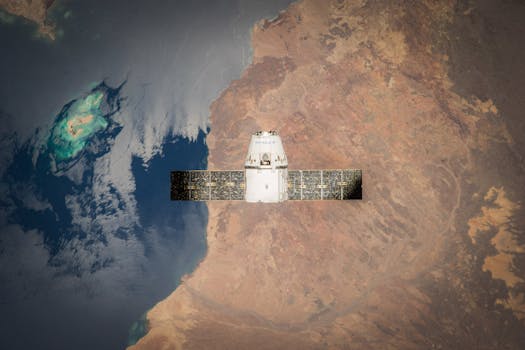
Eyes in the Sky: Advanced Technologies Transforming Earth Observation
Eyes in the Sky: Advanced Technologies Transforming Earth Observation, the field of earth observation has undergone a significant transformation in recent years, driven by advances in technologies such as satellite imaging, remote sensing, and geographic information systems (GIS). These technologies have enabled us to monitor and understand our planet in unprecedented detail, with far-reaching implications for fields such as environmental monitoring, urban planning, and disaster response.
The use of satellite imaging, in particular, has revolutionized the field of earth observation. Satellites in orbit around the Earth can capture high-resolution images of the planet’s surface, providing valuable insights into phenomena such as deforestation, ocean currents, and weather patterns. Remote sensing technologies, such as radar and lidar, can also be used to gather data on the Earth’s surface and atmosphere, allowing scientists to study everything from soil moisture to atmospheric pollution.
Applications of Earth Observation
The applications of earth observation are diverse and widespread. In the field of environmental monitoring, satellite imaging and remote sensing can be used to track changes in land use, monitor water quality, and detect signs of climate change. Urban planners can use GIS and satellite imaging to optimize urban design, manage traffic flow, and identify areas of high population density. Disaster response teams can use earth observation data to quickly assess damage and identify areas of need, allowing for more effective relief efforts.
In addition to these practical applications, earth observation has also enabled scientists to study the Earth’s systems in unprecedented detail. By analyzing satellite imagery and remote sensing data, researchers can gain insights into complex phenomena such as ocean currents, atmospheric circulation patterns, and the water cycle. This knowledge can be used to improve our understanding of the Earth’s climate, ecosystems, and natural resources, ultimately informing policy decisions and management strategies.
Technological Advances
Several technological advances have driven the transformation of earth observation in recent years. The development of small satellites, such as CubeSats, has made it possible to launch constellations of satellites into orbit, providing near-real-time imagery and data on the Earth’s surface. Advances in sensor technology have also enabled the development of more sophisticated remote sensing instruments, capable of collecting data on a wide range of phenomena, from soil moisture to atmospheric pollution.
The increasing use of cloud computing and big data analytics has also enabled the rapid processing and analysis of large datasets, allowing researchers to extract insights and patterns from vast amounts of earth observation data. Additionally, the development of open-source software and data platforms has facilitated collaboration and data sharing among researchers, governments, and industry stakeholders, driving innovation and advancing the field of earth observation.
Conclusion
In conclusion, the field of earth observation has undergone a significant transformation in recent years, driven by advances in technologies such as satellite imaging, remote sensing, and GIS. These technologies have enabled us to monitor and understand our planet in unprecedented detail, with far-reaching implications for fields such as environmental monitoring, urban planning, and disaster response. As technological advances continue to drive innovation in the field of earth observation, we can expect to see even more exciting developments in the years to come, ultimately leading to a better understanding of our planet and its complex systems.


